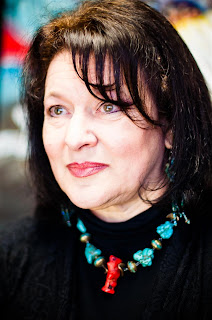Shark filmmaker Jeff Kurr on overcoming his ‘Jaws’-inspired fear
Jeff Kurr is a Los Angeles-based film-maker whose up close and personal shots of great white sharks make the iconic movie Jaws look like child’s play.
He has been filming for Discovery Channel’s Shark Week since 1991, and although he’s done nearly 30 shark doccies, he’s first to admit it took him a long time to overcome his “Jaws-inspired fear of sharks”.
There are many fascinating angles to explore when it comes to sharks and their behaviour, but in Great White Invasion – here’s the part where the hair on your neck stands on end – Kurr and his team have specifically focused their investigation on why Great White sharks are coming closer to our shores.
“What we have seen all around the world in a lot of popular beaches is that Great White sharks are coming closer and closer to shore,” he says. “We wanted to figure out why that is, and why they wouldn’t be attacking people. That’s an interesting thing to ask, as they are often very close to people.”
Through his filming, Kurr has found a few answers, many of which depend on the area and the species of shark involved. In False Bay, he found that Great
White sharks come close to shore (right amongst swimmers) when they pursue food sources, like smaller sharks, rays and fish.
They also found that they may be coming close to shore (into around five feet of water) just to warm up, because the warmer water that allows them to expend less energy. Kurr says that one of his biggest challenges as a filmmaker has been finding fresh angles. But the sweat and tears all pay off the minute you film one of those scenes that you know will be talked about for weeks.
“One of the coolest parts of the film is where Chris Fallows, the host of the show, decides to paddleboard with a Great White shark in Gansbaai,” Kurr says. “The reason he was doing that was to show that, when these sharks come in close to shore, they really have no interest in people. But it was amazing to see a four-metre Great White shark swim right under his board.”
Even for a filmmaker as experienced as Kurr, there’s a first time for everything, and one of his most memorable shark experiences happened in Gansbaai.
“We knew that sharks came in close to shore, but we had no idea that they were right in the waves – two metres of water. So what we did is we got on a small inflatable boat to check these sharks out,” he says. “Basically, it’s the type of craft that, if a shark bit it, you’d be in the water with these sharks.
“That’s the risk that we took. But we had a feeling that the sharks had no interest in us, and they looked at us and hung around, circling the boat,” Kurr says. “But they really had no interest in biting us. And for me, it was just a
thrilling, exciting experience, because I’d never seen Great Whites in water that shallow, just hanging out. That was very cool."
This article first appeared in CitiVibe in The Citizen on Monday 29 August 2011.
Great White Invasion airs on Animal Planet (DStv channel 264) on September
7 at 8.05pm.
































